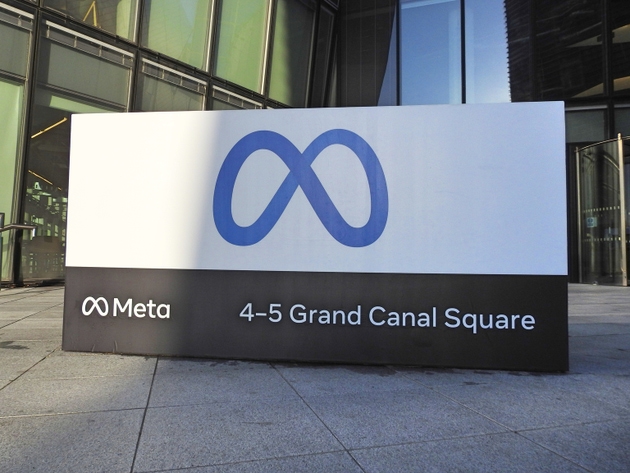Mobile payments
are becoming more popular around the world, particularly in developing
countries. Mobile payments are transactions in which funds are transferred from
one account to another using a mobile device such as a smartphone or tablet.
We will look at
the benefits, challenges, and opportunities of mobile payments in developing
countries in this article.
Individuals and
businesses in developing countries can benefit from mobile payments in a
variety of ways. Among the key advantages are:
Inclusion
in Finance
Mobile payments
can help to promote financial inclusion by giving people access to financial
services they might not have had before. This is especially critical in
developing countries, where many people lack access to traditional banking
services.
Convenience
Mobile payments
allow people to complete transactions without having to carry cash or visit a
bank. This is especially true in countries where banks and financial services
are often located far from where people live and work.
Savings
on expenses
Mobile payments
can be cheaper than traditional payment methods like bank transfers or money
orders. Individuals and businesses can benefit from lower transaction fees and
other costs.
Security
In general,
mobile payments are more secure than cash transactions. To protect users’
financial information and prevent fraud, mobile payment platforms employ
encryption and other security measures.
Mobile
Payments Challenges in Developing Countries
While mobile
payments have many advantages, there are several challenges that must be
overcome in order for them to be widely adopted in developing countries. Among
the major challenges are:
Infrastructure
Mobile payments
necessitate a stable internet connection as well as mobile network
infrastructure. These infrastructure requirements are not yet in place in many
developing countries, making it difficult for individuals to complete mobile
payments.
Literacy
in the Digital Age
Individuals
must have a certain level of digital literacy in order to use mobile payment
platforms. This can be difficult in developing countries where many people are
unfamiliar with digital technology.
Security
While mobile
payments are more secure than cash transactions in general, they are still
susceptible to fraud and other security risks. This is especially true in
developing countries, where cybersecurity measures may be weaker than in
developed nations.
Regulatory
Setting
The regulatory
environment for mobile payments varies greatly between countries. To encourage
the use of mobile payments in developing countries, there must be a clear and
stable regulatory framework in place.
Mobile
Payment Opportunities in Developing Countries
Despite the
challenges, developing countries have several opportunities for mobile
payments. Among the key opportunities are:
Inclusion
in Finance
Mobile payments
can help to promote financial inclusion by giving people access to financial
services they might not have had before. This has the potential to reduce
poverty while also promoting economic growth.
Innovation
Mobile payments
are a relatively new technology with numerous opportunities for innovation.
Mobile payment platforms, for example, could be used to facilitate
microlending, peer-to-peer payments, and other novel financial services.
Economic
Development
By facilitating
transactions and lowering the costs associated with traditional payment
methods, mobile payments can help to promote economic growth. This can help to
improve market efficiency and encourage entrepreneurship.
Social
Implications
In developing
countries, mobile payments can have a significant social impact. Mobile payment
platforms, for example, could be used to facilitate the distribution of social
welfare payments to those in need, such as food subsidies or cash transfers.
What
mobile payment system will work best in developing countries?
In essence there
are 5 types of different mobile payment systems, and each one of them come with
their own inherent advantages.
These systems
are:
1. The peer-to-peer
mobile payment systems (commonly referred to as P2P)
2. The browser-based
payment system
3. The NFC
payment system: this system usually operates through mobile wallets which in
turn are connected via a contactless mobile payment system.
4. The wireless
credit or debit card readers which are in essence mobile card payment systems
5. The in-app
mobile payment systems
Understanding
which one might take the lead is still unclear at a general level, however,
when zooming in on specific developing countries, the picture might be clearer
as there are unequivocally higher adoptions rates on certain mobile payment
systems over others.
As such, it’s a
certainty that as higher adoption rates and higher internet penetration rates get
higher and higher, so will all of these 5 mobile payment systems become a part of
everyday life in developing countries.
Economies
worldwide are seeing record
numbers across the board in what concerns mobile wallet market size and the
estimates for the upcoming years are incredibly promising.
Accordingly,
going forward, while all five mobile payment systems will surely thrive in developing
economies, we are inclined to single out two of them which we believe are
primed to see significant growth: in-app mobile payment systems and P2P mobile
payment systems.
Wrapping
Up
Individuals and
businesses in developing countries benefit greatly from mobile payments, which
include financial inclusion, convenience, cost savings, and security.
However,
several challenges must be addressed, including infrastructure, digital
literacy, security, and the regulatory environment.
Despite these
obstacles, mobile payments in developing countries offer significant
opportunities for financial inclusion, innovation, economic growth, and social
impact.
Several key
steps must be taken to promote the adoption of mobile payments in developing
countries. First, a concerted effort must be made to build out the necessary
infrastructure, such as reliable internet connections and mobile network
coverage.
Second, there
should be a greater emphasis on promoting digital literacy and educating people
on how to use mobile payment platforms.
Third, strong
security measures must be developed to protect users’ financial information and
prevent fraud. Fourth, a stable and clear regulatory environment that
encourages the use of mobile payments is required.
Governments,
financial institutions, and technology firms all have a role to play in
promoting mobile payment adoption in developing countries. Governments can set
the regulatory framework and invest in infrastructure development.
Financial
institutions can collaborate with technology companies to create innovative
mobile payment platforms that meet the specific needs of developing-country
users. Technology firms can concentrate on creating user-friendly mobile
payment applications that are accessible to a broad range of users.
Finally, mobile
payments provide significant benefits to individuals and businesses in
developing countries. They can aid in the promotion of financial inclusion, the
reduction of transaction costs, and the enhancement of security.
However,
several challenges must be addressed, such as infrastructure, digital literacy,
security, and the regulatory environment. We can promote economic growth and
social welfare in developing countries by addressing these challenges and
capitalizing on the opportunities provided by mobile payments.
Mobile payments
are becoming more popular around the world, particularly in developing
countries. Mobile payments are transactions in which funds are transferred from
one account to another using a mobile device such as a smartphone or tablet.
We will look at
the benefits, challenges, and opportunities of mobile payments in developing
countries in this article.
Individuals and
businesses in developing countries can benefit from mobile payments in a
variety of ways. Among the key advantages are:
Inclusion
in Finance
Mobile payments
can help to promote financial inclusion by giving people access to financial
services they might not have had before. This is especially critical in
developing countries, where many people lack access to traditional banking
services.
Convenience
Mobile payments
allow people to complete transactions without having to carry cash or visit a
bank. This is especially true in countries where banks and financial services
are often located far from where people live and work.
Savings
on expenses
Mobile payments
can be cheaper than traditional payment methods like bank transfers or money
orders. Individuals and businesses can benefit from lower transaction fees and
other costs.
Security
In general,
mobile payments are more secure than cash transactions. To protect users’
financial information and prevent fraud, mobile payment platforms employ
encryption and other security measures.
Mobile
Payments Challenges in Developing Countries
While mobile
payments have many advantages, there are several challenges that must be
overcome in order for them to be widely adopted in developing countries. Among
the major challenges are:
Infrastructure
Mobile payments
necessitate a stable internet connection as well as mobile network
infrastructure. These infrastructure requirements are not yet in place in many
developing countries, making it difficult for individuals to complete mobile
payments.
Literacy
in the Digital Age
Individuals
must have a certain level of digital literacy in order to use mobile payment
platforms. This can be difficult in developing countries where many people are
unfamiliar with digital technology.
Security
While mobile
payments are more secure than cash transactions in general, they are still
susceptible to fraud and other security risks. This is especially true in
developing countries, where cybersecurity measures may be weaker than in
developed nations.
Regulatory
Setting
The regulatory
environment for mobile payments varies greatly between countries. To encourage
the use of mobile payments in developing countries, there must be a clear and
stable regulatory framework in place.
Mobile
Payment Opportunities in Developing Countries
Despite the
challenges, developing countries have several opportunities for mobile
payments. Among the key opportunities are:
Inclusion
in Finance
Mobile payments
can help to promote financial inclusion by giving people access to financial
services they might not have had before. This has the potential to reduce
poverty while also promoting economic growth.
Innovation
Mobile payments
are a relatively new technology with numerous opportunities for innovation.
Mobile payment platforms, for example, could be used to facilitate
microlending, peer-to-peer payments, and other novel financial services.
Economic
Development
By facilitating
transactions and lowering the costs associated with traditional payment
methods, mobile payments can help to promote economic growth. This can help to
improve market efficiency and encourage entrepreneurship.
Social
Implications
In developing
countries, mobile payments can have a significant social impact. Mobile payment
platforms, for example, could be used to facilitate the distribution of social
welfare payments to those in need, such as food subsidies or cash transfers.
What
mobile payment system will work best in developing countries?
In essence there
are 5 types of different mobile payment systems, and each one of them come with
their own inherent advantages.
These systems
are:
1. The peer-to-peer
mobile payment systems (commonly referred to as P2P)
2. The browser-based
payment system
3. The NFC
payment system: this system usually operates through mobile wallets which in
turn are connected via a contactless mobile payment system.
4. The wireless
credit or debit card readers which are in essence mobile card payment systems
5. The in-app
mobile payment systems
Understanding
which one might take the lead is still unclear at a general level, however,
when zooming in on specific developing countries, the picture might be clearer
as there are unequivocally higher adoptions rates on certain mobile payment
systems over others.
As such, it’s a
certainty that as higher adoption rates and higher internet penetration rates get
higher and higher, so will all of these 5 mobile payment systems become a part of
everyday life in developing countries.
Economies
worldwide are seeing record
numbers across the board in what concerns mobile wallet market size and the
estimates for the upcoming years are incredibly promising.
Accordingly,
going forward, while all five mobile payment systems will surely thrive in developing
economies, we are inclined to single out two of them which we believe are
primed to see significant growth: in-app mobile payment systems and P2P mobile
payment systems.
Wrapping
Up
Individuals and
businesses in developing countries benefit greatly from mobile payments, which
include financial inclusion, convenience, cost savings, and security.
However,
several challenges must be addressed, including infrastructure, digital
literacy, security, and the regulatory environment.
Despite these
obstacles, mobile payments in developing countries offer significant
opportunities for financial inclusion, innovation, economic growth, and social
impact.
Several key
steps must be taken to promote the adoption of mobile payments in developing
countries. First, a concerted effort must be made to build out the necessary
infrastructure, such as reliable internet connections and mobile network
coverage.
Second, there
should be a greater emphasis on promoting digital literacy and educating people
on how to use mobile payment platforms.
Third, strong
security measures must be developed to protect users’ financial information and
prevent fraud. Fourth, a stable and clear regulatory environment that
encourages the use of mobile payments is required.
Governments,
financial institutions, and technology firms all have a role to play in
promoting mobile payment adoption in developing countries. Governments can set
the regulatory framework and invest in infrastructure development.
Financial
institutions can collaborate with technology companies to create innovative
mobile payment platforms that meet the specific needs of developing-country
users. Technology firms can concentrate on creating user-friendly mobile
payment applications that are accessible to a broad range of users.
Finally, mobile
payments provide significant benefits to individuals and businesses in
developing countries. They can aid in the promotion of financial inclusion, the
reduction of transaction costs, and the enhancement of security.
However,
several challenges must be addressed, such as infrastructure, digital literacy,
security, and the regulatory environment. We can promote economic growth and
social welfare in developing countries by addressing these challenges and
capitalizing on the opportunities provided by mobile payments.






































